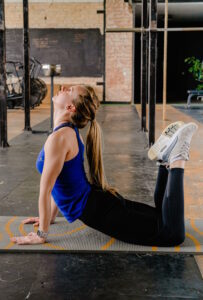
Embarking on a journey to enhance your flexibility through Pilates is an exciting endeavor that requires careful planning and commitment. As a dedicated advocate for optimal flexibility progress, I’m thrilled to guide you through the process of crafting a weekly Pilates routine that will help you achieve your goals effectively. Let’s explore strategies to enhance flexibility, discuss the time it takes to see progress, address the frequency of Pilates sessions, and uncover tips to maximize your Pilates practice.
How can I get more flexible for Pilates?
To improve flexibility for Pilates, it’s crucial to cultivate a holistic approach that integrates dedicated stretching, dynamic movements, and mindful Pilates exercises. Incorporate these strategies into your routine:
1. Dedicated Stretching: Set aside time for regular stretching sessions that focus on major muscle groups. Hold stretches for an adequate duration to encourage lengthening and relaxation.
2. Dynamic Warm-Up: Begin your Pilates sessions with a dynamic warm-up that includes gentle movements to lubricate joints and increase blood flow to muscles.
3. Pilates for Flexibility: Integrate Pilates exercises that emphasize flexibility. Moves like the “Roll Up,” “Spine Stretch Forward,” and “Mermaid” can aid in enhancing flexibility while engaging core muscles.
4. Consistency: Consistency is key. Incorporate flexibility-focused sessions into your weekly routine and commit to gradual progress.
How long does it take to become more flexible with Pilates?
The timeline for increased flexibility varies among individuals and depends on factors such as starting point, genetics, and dedication to practice. While some may experience noticeable improvements in a few weeks, significant progress usually becomes apparent after a few months of consistent effort. Remember that patience and consistency are paramount on this journey.
Can you do Pilates 7 days a week?
While enthusiasm is admirable, doing Pilates every single day may not be the most effective approach. Muscles and joints need time to recover and repair. Aim for a balanced routine that includes both active Pilates sessions and rest days. Three to five Pilates sessions per week, supplemented with restorative practices like gentle stretching or walking on off days, can strike a healthy balance.
How do you maximize Pilates?
To maximize the benefits of your Pilates practice and foster flexibility progress, consider the following tips:
1. Varied Sessions: Incorporate a mix of flexibility-focused exercises, core-strengthening moves, and full-body workouts to promote balanced development.
2. Mindful Engagement: Focus on proper form and mindful movement during each exercise. Quality of movement trumps quantity.
3. Progressive Challenge: Gradually increase the intensity and complexity of exercises to challenge your body and encourage adaptation.
4. Breathing and Relaxation: Pay attention to your breath during exercises to enhance relaxation and flexibility. Deep, controlled breathing supports muscular release.
5. Rest and Recovery: Adequate rest is essential for progress. Allow your muscles time to recover and repair to prevent burnout and injury.
Summing it Up
Crafting a weekly Pilates routine to maximize flexibility progress requires a thoughtful blend of flexibility-focused exercises, active Pilates sessions, and adequate rest. By dedicating time to both stretching and dynamic Pilates movements, you set the stage for balanced muscle development and enhanced joint mobility. While progress varies from person to person, patience and consistency are your allies. Remember, it’s not about the frequency but the quality and mindful engagement in each session that lead to significant flexibility gains. Approach your Pilates practice with intention, listen to your body’s cues, and enjoy the transformative journey towards increased flexibility and overall well-being.